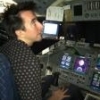M20J Strange engine behavior - question to the forum
-
Members Online
- fdc7169
- Alan Maurer
- Phil EF
- Robm
- eman1200
- Wingover
- N201MKTurbo
- midlifeflyer
- MusicCityMooney
- M20S Driver
- Ragsf15e
- PT20J
- Ibra
- Himark
- Rmnpilot
- steve s
- redbaron1982
- LANCECASPER
- Skyland
- Matthew P
- IvanP
- 201Mooniac
- Max Clark
- wolfbyte
- neilpilot
- ta2too
- DXB
- BillyT0020
- mluvara
- 47U
- Dave B
- outermarker
- slowflyin
- dvictory
- Yan X
- RGDantas
- jeremyc209
- peterl


Recommended Posts
Join the conversation
You can post now and register later. If you have an account, sign in now to post with your account.